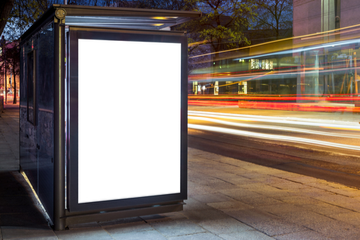
As digital advertisers, driving strong performance is at the heart of what we do. But, what is the true goal of paid search ad copy? If clicks, conversions, and demand generation are what is most imperative to client success and satisfaction, do you really need fresh ad copy to accomplish these goals?
At first glance, you might think, yes.
Forbes estimated that in 2017, Americans were exposed to 4,000 different forms of ads and brand messaging each day. With ads packed on top of each other, it can sometimes be difficult to fully capture user attention and interest. This idea leads some people to believe that they have to consistently develop and redevelop novel ad copy that breaks through the clutter. While it isn’t wrong to try and separate yourself from competitors within the marketplace, you don’t have to spend too much time creating niche variances in your copy.
Do users actually care about ad copy?
In this highly saturated ecommerce landscape, people aren’t going to spend time reading all of the specifics of your ad copy, regardless of how fascinating it might be. The average user only spends a couple of seconds navigating the SERP after typing in their query, meaning that they’re not going to actively take the time to read all three headlines as well as both description lines. In my experience as a consumer, when I type in a query, I scan the ad’s first two headlines, display URL, and site links before deciding whether or not to click.
To prove this theory of whether users truly care about the wording and actual detail within the ad copy, we ran an A/B test for one of our clients during a promotional period. From a high-level perspective, the test involved running evergreen ad copy versus promotion-driven ad copy across all of our branded trademark campaigns.
The results: Evergreen copy drove a 30% higher click-through rate
The outcomes we found were captivating. Our evergreen copy drove a 30% higher click-through rate over the course of the promo period, as well as a 19% lower cost per click. Ultimately, this decrease in CPC helped facilitate increased efficiency, saving us thousands of dollars. Evergreen copy also drove stronger back-end metrics, showing +2800bps in conversion rate versus our promotion copy.
With this being said, I’m not trying to say that it’s acceptable to get complacent with your copy development. I do believe that there are things you can apply to your ad copy that will help your ad stand out, drive relevance, increase quality score in the auction process, and ultimately drive increased traffic to the site.
Typically, strong PPC ads commonly contain features, benefits, and a strong call to action. The purpose of including these elements isn’t because they’re going to necessarily be heavily read or sifted through. It is merely to increase visibility, user experience, and ultimately get higher conversions for your clients.
The fight for SERP real estate isn’t won through compelling ad copy, but through relevance, quality score, and keyword inclusion. These elements convince the user that your ad will provide the solution to their query.
The answer isn’t easy
Incorporating this practice can hold many challenges, especially within an advertiser to client relationship. There are many times where a client pushes us to use copy that is either developed in-house, has a specific promotional message, or is nearly identical to the wording on their website. Sometimes these ad copy suggestions can be successful in increasing the quality score and relevance. But being an agency, it is our job to suggest running tests on different variations of ad copy that can potentially drive higher performance, especially since the window of time when users assess PPC ads is extremely small. At the end of the day, many brands will want to utilize whatever will drive the highest traffic, conversions, and demand across their accounts.
Focus not on wording, but on results
To summarize, ad copy is absolutely imperative for PPC success. But remember, users, are unlikely to take the time to read all of the intricacies included within each headline and description. Instead of spending time focusing solely on eloquent wording, it is important to suggest tests with your clients and ensure that you are having conversations about continuously optimizing your copy from a performance-based mindset. With this clutter-filled ecommerce marketplace, the essential benefits of ad copy lay in creating copy that will have a high-quality score and drive heavy clicks.
Nicolas Ross is an SEM Coordinator at PMG.
Related reading
IF functions are a versatile means to tailor ads to users in real time. Speed up the workflow and free up bandwidth to focus on things that truly count.
The search industry’s interest goes beyond Google, Apple Search Ads’ on the rise. Kenshoo reveals insights and key stats on social and search advertising.
Are high DA sites always a good fit for your content? Our study found a link between DA and the response types we received from writers at these publishers.
This marketing news is not the copyright of Scott.Services – please click here to see the original source of this article. Author: Nicolas Ross
For more SEO, PPC, internet marketing news please check out https://news.scott.services
Why not check out our SEO, PPC marketing services at https://www.scott.services
We’re also on:
https://www.facebook.com/scottdotservices/
https://twitter.com/scottdsmith
https://plus.google.com/112865305341039147737
The post The fall of ad copy, long live ad copy appeared first on Scott.Services Online Marketing News.
source https://news.scott.services/the-fall-of-ad-copy-long-live-ad-copy/




No comments:
Post a Comment